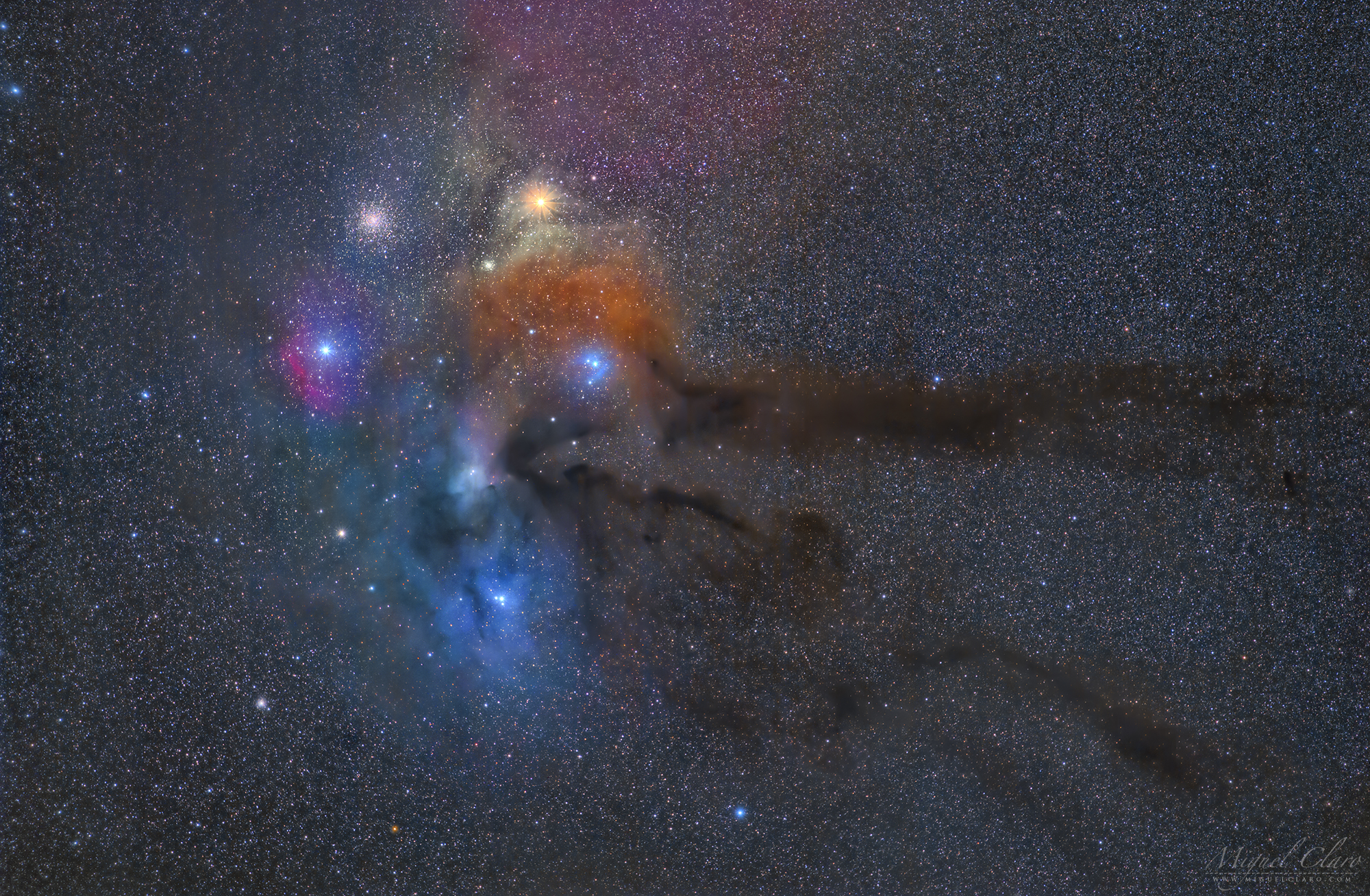Rho Ophiuchi's Colorful Cosmic Clouds Glisten in Starry Deep-Space Photo

Miguel Claro is a professional photographer, author and science communicator based in Lisbon, Portugal, who creates spectacular images of the night sky. As a European Southern Observatory Photo Ambassador, a member of The World At Night and the official astrophotographer of the Dark Sky Alqueva Reserve, he specializes in astronomical "skyscapes" that connect Earth and the night sky. Join him here as he takes us through his photograph "Rho Ophiuchi – A Wonderful Cosmic Cloud."
One of the most colorful wonders of the summer sky in the Northern Hemisphere, especially for deep-sky photographers, is the Rho Ophiuchi cloud complex.
This nebula, a dense cloud of interstellar dust and gas, is the closest star-forming region to our solar system, located approximately 460 light-years from Earth, in the constellation Ophiuchus.
The bright, supergiant star Antares, with its orange glow, is visible near the top of this image. The vibrant cloud complex also features glowing, red hydrogen gas from emission nebulas and blue light from reflection nebulas, which, as the name suggests, reflect starlight from their surroundings.
Related: Rho Ophiuchi: A Colorful Cosmic Cloud in Photos
Visible to the left of Antares is the globular star cluster Messier 4, or M4, which lies far beyond the colorful cloud complex, at some 7,000 light-years from Earth. The right half of the image is full of dark-brown regions consisting of interstellar dust grains that prevent light from passing through them.
To capture this image of Rho Ophiuchi, I used a modified Canon 6D DSLR astrophotography camera with a 200-millimeter focal lens with an aperture set to f/4, and a Takahashi EM-200 mount. The camera was programmed to shoot with an ISO setting of 1600 and an exposure time of 105 seconds. The final composite combines 67 frames with a total exposure time of 117 minutes. The image processing was completed with PixInsight 1.8.6 and Adobe Photoshop CC 2019.
Get the Space.com Newsletter
Breaking space news, the latest updates on rocket launches, skywatching events and more!
Editor's note: If you have an amazing night-sky photo you'd like to share with us and our news partners for a possible story or image gallery, please contact Space.com's Editor-in-Chief Tariq Malik at spacephotos@space.com.
To have a print of Claro's amazing astrophotography, visit his Fine Art Print store at www.miguelclaro.com/prints. Follow us on Twitter @Spacedotcom and on Facebook.
Join our Space Forums to keep talking space on the latest missions, night sky and more! And if you have a news tip, correction or comment, let us know at: community@space.com.









